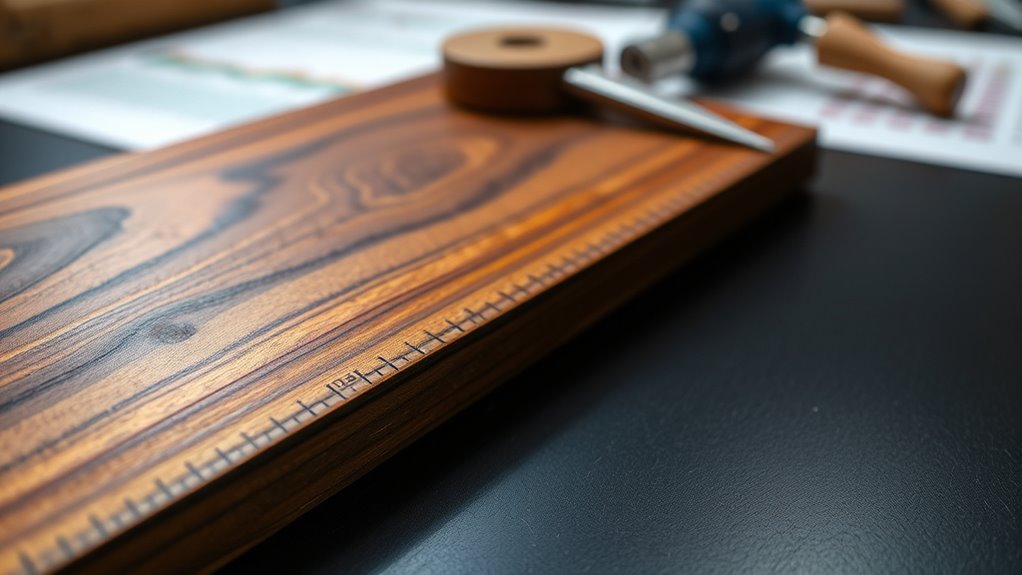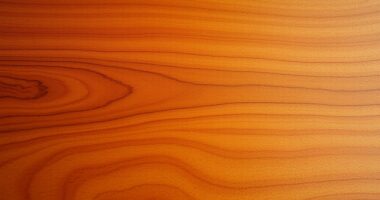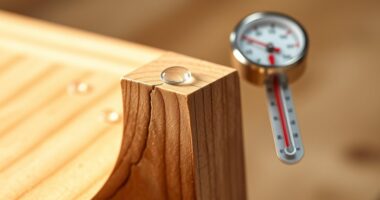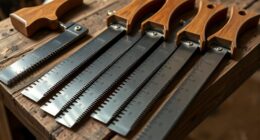The Janka hardness scale is helpful for comparing how resistant different woods are to dents and indentation, but it doesn’t tell you everything about a wood’s performance. It mainly measures durability against wear but ignores factors like stability, moisture resistance, and how the wood reacts under environmental changes. Relying only on Janka can be misleading. To make a truly informed choice, you’ll want to think about other properties—there’s more to discover beyond just hardness.
Key Takeaways
- The Janka scale measures resistance to denting but doesn’t account for durability, stability, or environmental performance.
- Hardness alone can’t determine a wood’s suitability; factors like moisture resistance and grain structure are also crucial.
- Janka scores can be misleading if used as the sole performance indicator for flooring or furniture.
- The scale was developed for specific manufacturing needs and doesn’t reflect all aspects of wood performance.
- A comprehensive material assessment requires considering multiple properties beyond just Janka hardness ratings.

Have you ever wondered how to determine whether a piece of wood is suitable for your project? It’s a common question, and understanding wood hardness scales can seem straightforward at first glance. However, from an engineer’s perspective, the story behind these scales—and their historical development—adds layers of complexity. Wood hardness isn’t just about picking the toughest material; it’s about understanding how different factors influence performance, durability, and usability.
The most widely recognized scale is the Janka Hardness Test, which measures the force needed to embed a steel ball into the wood halfway. While this test provides a useful baseline, it’s important to recognize that it was developed in the early 20th century, primarily to aid flooring manufacturers. Over time, the Janka scale has become a standard reference, but it’s not a one-size-fits-all solution. Its simplicity appeals to many, but from an engineer’s perspective, that simplicity can be misleading. The scale measures resistance to denting and indentation, but doesn’t account for other essential properties like stability, moisture resistance, or how the wood reacts under different environmental conditions.
Historically, the development of wood hardness scales was driven by the need for consistency and efficiency in manufacturing. As woodworking industries expanded, so did the demand for reliable ways to compare different species and grades of wood. Early methods were mostly visual or based on rough physical tests, but as technology advanced, standardized measures like the Janka scale emerged. These developments aimed to provide quantifiable data, enabling engineers and builders to make informed decisions. Yet, it’s essential to remember that these scales have limitations rooted in their development history. They’re designed for specific purposes and may not reflect real-world performance in every scenario.
From your perspective, choosing the right wood involves more than referencing a hardness number. While a high Janka score indicates good resistance to dents, it doesn’t necessarily mean the wood is suitable for every application. For instance, a very hard wood might be brittle or difficult to work with, leading to problems during installation or finishing. Conversely, softer woods might be more forgiving but less durable. Understanding the historical development of these scales helps you appreciate their purpose and limits, guiding you to consider additional factors like grain structure, moisture content, environmental exposure, and comprehensive performance metrics.
Frequently Asked Questions
How Does Moisture Content Affect Wood Hardness Ratings?
Moisture content substantially impacts wood hardness ratings because moisture variation caused by seasonal changes can alter how dense the wood feels. When wood absorbs moisture, it swells, making it softer and potentially lowering its hardness rating. Conversely, drier conditions cause shrinkage and can increase hardness. So, you should consider seasonal changes and moisture levels when evaluating wood hardness, as these factors influence the accuracy of the ratings.
Are Softer Woods More Durable Than Harder Woods?
Think of wood as a character in your story; softness doesn’t mean weakness. Softer woods, with lower wood density, often charm with their aesthetic appeal and gentle resilience, but may not be as durable as harder woods. Harder woods stand strong, resisting dents, while softer woods offer warmth and visual beauty. Your choice depends on whether you value delicate elegance or robust endurance in your project.
Can Janka Hardness Predict Wood’s Resistance to Scratches?
You might think Janka hardness predicts scratch resistance, but it’s not the whole story. A wood’s grain pattern and surface finish play vital roles in resisting scratches. For example, a dense, tight grain with a smooth finish can hide scratches better than a softer wood with visible grain variation. So, while Janka gives a general idea, consider grain pattern and color variation for a more accurate prediction of scratch resistance.
How Do Environmental Factors Influence Wood Hardness Over Time?
Environmental factors like eco friendly harvesting and climate change effects can impact wood hardness over time. You might notice wood becoming softer or more prone to damage as it absorbs moisture or faces temperature fluctuations. Climate change accelerates these effects, causing wood to swell, contract, or degrade faster. These changes influence how durable your wood remains, regardless of its initial hardness, so consider environmental impacts when choosing and maintaining wood products.
Is There a Standard Testing Method for Wood Hardness Worldwide?
Imagine you’re selecting hardwood flooring, and you wonder if a standard testing method exists worldwide. Currently, there isn’t a universal standard, as testing variability and wood density influence results. For example, different labs may use varied methods, causing inconsistent hardness ratings. While some regions follow ASTM or Janka tests, these aren’t globally uniform. So, you should consider regional standards and recognize that testing variability impacts the accuracy of hardness assessments.
Conclusion
Remember, the Janka scale is just one piece of the puzzle in choosing wood. Don’t let it overshadow other essential factors like durability, aesthetic, and workability. Think of it like a compass—helpful, but not the entire map. By looking beyond the numbers, you’ll find the perfect wood for your project, one that’s as unique as your vision. After all, in the world of wood, it’s the unseen qualities that truly stand the test of time.









